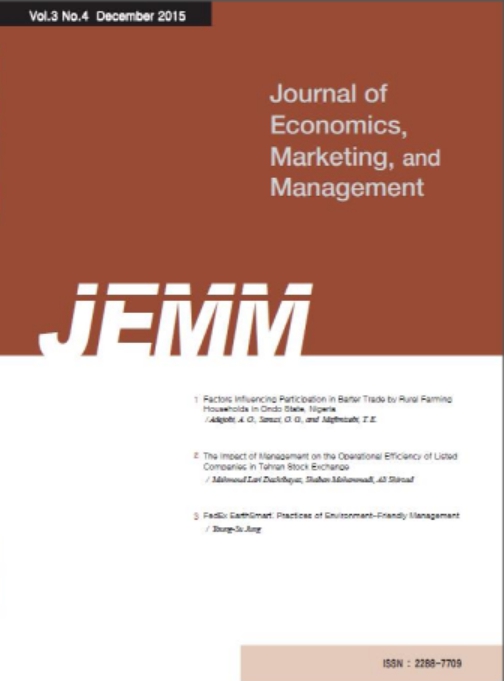- Log In/Sign Up
- E-ISSN2288-7709
- KCI
 E-ISSN : 2288-7709
E-ISSN : 2288-7709
Vol.8 No.3
Abstract
Purpose: Korea has a long history of kid's content industries. Also, Korea's kid's content market has been thriving for a long time, but recently, a company called Smart Study has sharply raised Korea's status because of its competitive advantage and capability in the kid's content industry. Research design, data and methodology: This research has explored and examined how Smart Study was successful in kid's content industries. Also, the research examined the present and potential competitors in the kid's content industry. Results: We investigated and explored how they were different from other Korean kid industries through value, rare, inimitability, and organization (VRIO) framework. Conclusions: One of the primary reasons for their success is because Smart Study has strengths in marketing that brand character and making consumers loyal to the company. Lastly, this paper attempted to explain how they have promoted their company and investigated how other companies promote themselves in the kid's content industry. This paper has limitations. We could not explain all the fields of kid content. The kids' content has developed tremendously, but there are many hidden parts. It has been successful in Korea and is still growing and proliferating. Also, there is a slight lack of scarcity in distribution methods.
Abstract
Purpose: Previous literature shows that a price promotion serves as a negative cue of product quality especially when consumers have no additional information about the product's other attributes. In this research, we explore how the effect of price promotions on consumers' perceptions of product quality changes depending on their ability to compare promoted product attributes with competitive products' attributes. Research design, data and methodology: Specifically, we use a series of scenario-based lab experiments using different types of products and explore if attribute alignability among competing products in a consumer's choice set influences consumers' ability to compare the product attributes and perceived quality. Results: Our study findings show that high attribute alignability among products makes consumers easier to compare the product attributes and thereby focus more on non-price information than price information. We also show that attribute alignability serves as a moderator and decreases perceived quality when the promotion level is higher. Therefore, the attribute alignability weakens the negative impact of a price promotion on consumers' perceived product quality. Conclusions: Our study findings provide new insights on how to implement price promotion strategies while keeping products' perceived quality, by considering the product's relationships with competing products in a choice set.
Abstract
Purpose: The purpose of this study is to identify the strategic direction of organizations and their employees to efficiently utilize smart factories and enhance business performance among Korean manufacturing companies. Research design, data, and methodology: We derived a structured research model to check the mediated effect of utilization of smart factory between the characteristics of smart factory and the innovation activities. Results: Quality characteristics of smart factory and Innovation activities were all found to have a statistically significant effect on utilization of smart factory, utilization of smart factory was found to have a statistically significant effect on the business performance. And it has been shown that the utilization of smart factory is partially mediated relative to the quality characteristics of smart factory and business performance and relative to innovation activities and business performance. Conclusions: Smart factory builders can reflect the areas that affect utilization of the smart factory in their strategies by considering the quality characteristics of the smart factory and innovation Activities. Therefore, smart factory builders can identify the quality characteristics of smart factory and reflect them in the process and analyze active utilize measures through the innovative activities of the employees of the organization, thereby influencing business performance.













